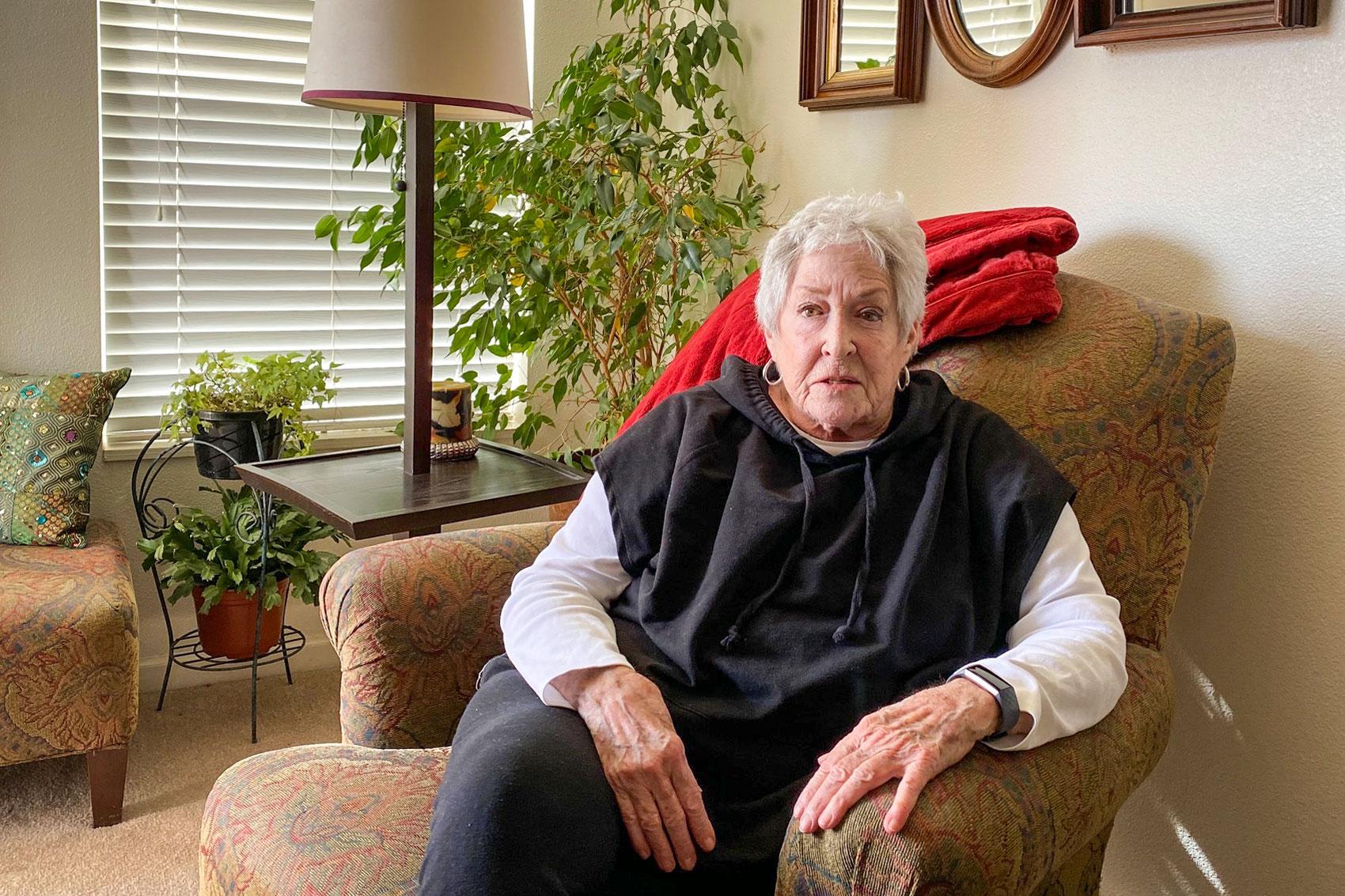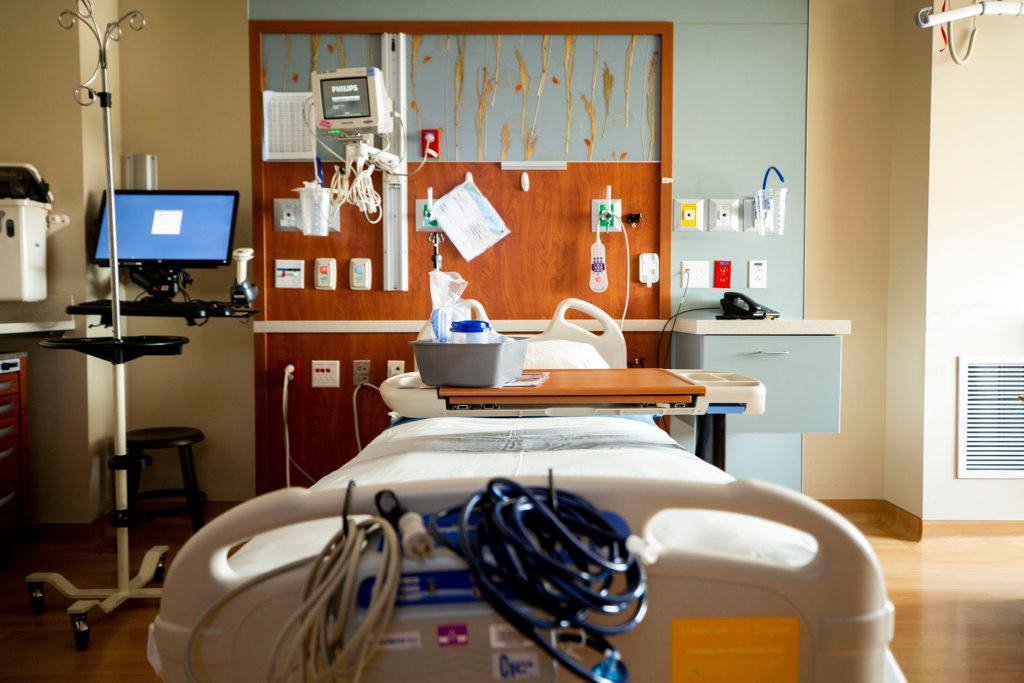
Eighty-year-old Susan Sarchet has been admitted to the hospital for chronic obstructive pulmonary disease more times than she can remember. The last couple of her COPD hospitalizations — once in November 2019 and most recently in October — were radically different.
Instead of being admitted to a traditional hospital, the Denver resident stayed right in her own home.
“Hospital at home” is gaining traction as COVID-19 hospitalizations rise. The idea is to allow those who might normally be admitted to a traditional hospital to instead receive the same care at home. More recently, that’s included some people who have severe side effects from COVID-19 but don’t need more advanced intensive care.
Sarchet says she got to know her doctors and nurses better at home with the same level of care.
Sarchet was on the verge of a hospital visit last November for COPD complications when her Medicaid managed-care program told her about its hospital-at-home pilot program. She jumped at the chance.
It wasn’t long before a whole medical team showed up with two cases of equipment and gave her a battery of tests, including a lung x-ray.
“All of a sudden they were [saying], ‘She needs IV medication,’” Sarchet recalled of that first day. “They improvised, by moving a lamp into my bedroom and hanging the IV from there.”
In her two-bedroom apartment, Sarchet said she got to know her doctors and nurses and they got to know her routines and adapted to her schedule. If she was feeling OK, her caregivers would leave when they were done with tests and treatments, secure in the knowledge she was attached to monitors if she needed urgent attention. They’d call to check in before bed, but it allowed her to maintain some level of independence.
“I was able to take my blood pressure, do my own weight, take my temperature, check my oxygen levels,” Sarchet said. “Then I would repeat those daily to the ‘good night call’ that I would have every day."
It was a far cry from previous hospitalizations which at times made Sarchet feel worse rather than better. Treatment then was handled by a rotating cast of doctors and nurses — “never saw the same person twice,” she noted — and where, ironically, she was in bed all the time but could never get enough sleep.
“Somebody's waking you up all night long,” Sarchet recalled. “I would have treatments like three or four during the night. Somebody else came to take my blood. You really don’t rest.”

The pandemic is encouraging more hospitals and insurers to get on board with at-home care.
Denver-based Dispatch Health, which got its start trying to reduce emergency room visits by offering similar at-home treatment, is the company behind Sarchet’s care. At the end of 2019, Dispatch added a hospital-at-home model called Advanced Care and has since formed partnerships with some insurance companies and Medicare and Medicaid plans, including Sarchet’s insurer.
Dispatch Health admitted it’s been an uphill battle to convince hospitals to adopt it and private and government insurers to pay for it.
“This has been one of the pieces holding back the sort of the wide-scale adoption of a ‘hospital-at-home model’ here in the United States,” said the company’s vice president of medical affairs, Dr. Patrick Kneeland.
Slowly, but surely, insurers and hospitals are warming to the idea.
Humana insurance is in active talks with Dispatch Health to provide hospital-at-home care to its members. It already contracts with Dispatch to offer emergency care at clients’ homes.
Susan Diamond runs what’s called Humana’s home solutions business and said coronavirus has accelerated countless medical innovations, including virtual doctor’s visits and now, the hospital-at-home model.
“In the absence of COVID, I think it probably would have taken three or more years to reach the level of interest and adoption that we're likely to see in 2021,” Diamond said.
She said as hospitals fill with coronavirus patients at a time of year when they are already busy treating people with other respiratory illnesses, there is more of an incentive to use the model than before.
“Oftentimes they had unused capacity in their brick and mortar,” Diamond said. “And so wasn't a lot of motivation to create additional capacity in a home-based setting that might divert patients from their facilities.”
Another incentive came in November when the Centers for Medicare and Medicaid Services announced it would issue a waiver and reimburse hospitals for hospital-at-home care. The move is particularly significant since policy decisions by federal insurers often pave the way for innovation by private insurers.
Hospital-at-home care isn't the right fit for intensive care, though.
The approach isn’t for everyone since most patients undergoing treatment at home need to have some ability to fend for themselves. It’s typically used for older people who have common chronic conditions. Experts say it wouldn’t work for a patient who needs intensive care level treatment or who might need to undergo surgery.
Advocates like Dr. Bruce Leff, a professor of medicine at Johns Hopkins University who advises Dispatch Health and another similar company, began to mull over the concept years ago when he was a resident offering primary care at the homes of elderly patients with chronic conditions. Problems would arise when those patients had more severe medical complications, whether it was a heart attack, heart failure or pneumonia
“And we would recommend, ‘Hey Mrs. Jones, Mr. Smith’, you should really go to the hospital for this,” Leff said. “And they would refuse to go.”
In particular, Leff remembered a house call to one older patient they’d been treating who had emphysema, heart disease, hypertension, arthritis and then later developed pneumonia.
“We said, ‘Hey, Walter, you really need to go to the hospital,’ and he kind of looked at us like we were a little bit crazy,” said Leff. “And he said ‘You know, I am so sick and tired of you geniuses from Hopkins. You’re great doctors but you run a crappy hotel and I'm not going to the hospital.’”
Those experiences planted a seed, and in the mid-90s Leff and his Hopkins colleagues experimented with a small hospital-at-home program. They wanted to prove patients would “get the [same] care in the home that they would otherwise get in the hospital like intravenous medicines, intravenous fluids, breathing treatments and x-rays and blood tests.”
As in Susan Sarchet’s case, doctors and nurses would visit patients in the home regularly and deliver what Leff hoped would be better and more personalized care.
“People liked it, the outcomes were terrific and the costs were lower,” Leff said.
Since then, more studies, including a larger one at the Brigham and Women’s Hospital in Boston, which now has a full-fledged program, have found similar results.
There’s another benefit to treatment at home these days: COVID-19 restrictions have generally prohibited family members from hospital visits but for patients like Susan Sarchet, her children could drop by the apartment — at a distance — and bring groceries and other supplies when she needed them.
Sarchet hasn’t been hospitalized since her last home round of care in October. But, she knows if her condition worsens again, she’d likely have the option to again recuperate at home.









